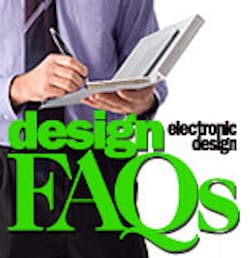What is LXI?
LAN eXtensions for Instrumentation (LXI) is the architecture for test systems. It's based on proven, widely used standards such as Ethernet.
What are these widely used standards?
Ethernet standards include Transmission Control Protocol/Internet Protocol (TCP/IP), Dynamic Host Configuration Protocol (DHCP), and Auto-MDIX (Media Dependent Interface Crossover). Interface standards include Interchangeable Virtual Instrument (IVI) driver and VXI-11 (VME eXtensions for Instrumentation) discovery. Instrument Web pages are viewable from a standard browser. IEC physical standards and IEEE 1588 time synchronization are used as well.
How does LXI differ from existing test architectures?
LXI was designed to incorporate the best features of the General Purpose Interface Bus (GPIB), VXI, and PCI Extensions for Instrumentation (PXI) while utilizing computer local-area network (LAN) standards.
Agilent is introducing new LXI products this year, click here for the updated list.
Be the first to receive LXI information by signing up here.
Click here to download the PDF version of this entire article.
About the Author
Roger Allan
Roger Allan is an electronics journalism veteran, and served as Electronic Design's Executive Editor for 15 of those years. He has covered just about every technology beat from semiconductors, components, packaging and power devices, to communications, test and measurement, automotive electronics, robotics, medical electronics, military electronics, robotics, and industrial electronics. His specialties include MEMS and nanoelectronics technologies. He is a contributor to the McGraw Hill Annual Encyclopedia of Science and Technology. He is also a Life Senior Member of the IEEE and holds a BSEE from New York University's School of Engineering and Science. Roger has worked for major electronics magazines besides Electronic Design, including the IEEE Spectrum, Electronics, EDN, Electronic Products, and the British New Scientist. He also has working experience in the electronics industry as a design engineer in filters, power supplies and control systems.
After his retirement from Electronic Design Magazine, He has been extensively contributing articles for Penton’s Electronic Design, Power Electronics Technology, Energy Efficiency and Technology (EE&T) and Microwaves RF Magazine, covering all of the aforementioned electronics segments as well as energy efficiency, harvesting and related technologies. He has also contributed articles to other electronics technology magazines worldwide.
He is a “jack of all trades and a master in leading-edge technologies” like MEMS, nanolectronics, autonomous vehicles, artificial intelligence, military electronics, biometrics, implantable medical devices, and energy harvesting and related technologies.

